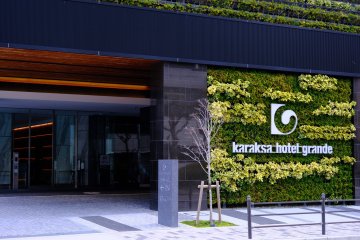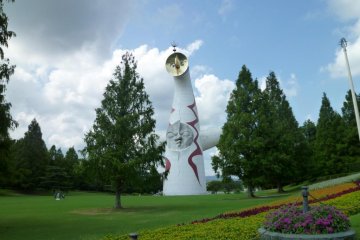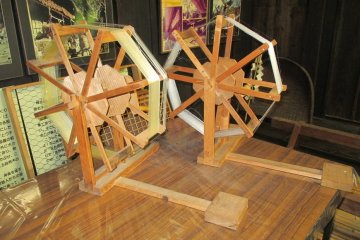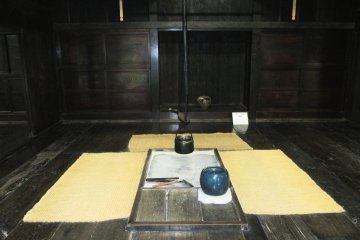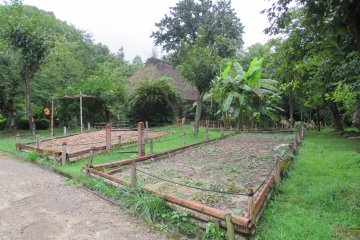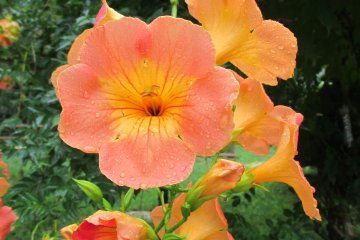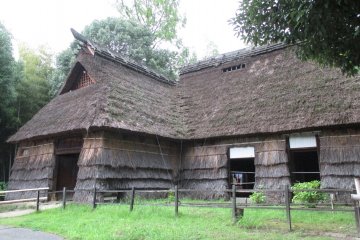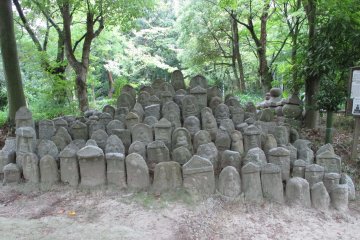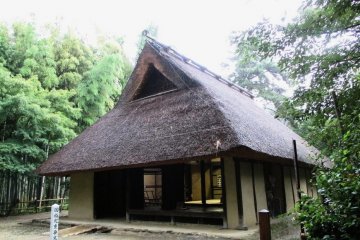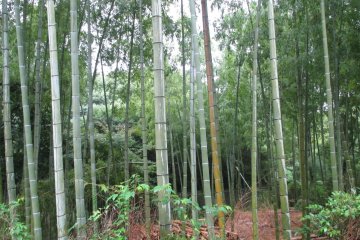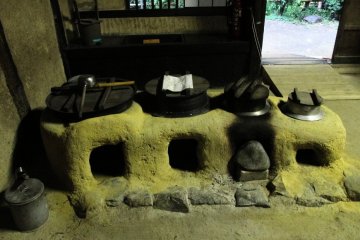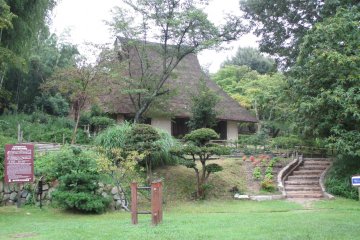There are all sorts of activities to do at Hattori Ryokuchi Park in Osaka. The park has play sets, flower gardens and a water park, however Hattori Ryokuchi Park also offers a glimpse of farm life during the Edo period through the park's open-air farmhouse museum.
The museum has 12 farmhouses built in the Edo period. Many of these houses were transported from different prefectures in Japan. Some houses are from as far west as Kagoshima Prefecture in Kyushu to as north as Iwate Prefecture in Tohoku.
The structure of each house is inherently tied to the region it comes from. The magariya (literally "bent house") was originally built in Iwate. A stable is attached to it, forming an L-shape. This stable was attached to the house for convenience during harsh winters. The storehouse from Kagoshima is built upon a platform to protect grain from humidity. The tall, hard pillars also protected stored items from mice. Another building from Nara Prefecture has a long and narrow design because its original location was in a city in a valley with limited space.
The farmhouses at the museum have artifacts from when they were first built. This provides great insight and historical knowledge into the lives of the former inhabitants from the Edo period. Inside the farmhouse from Miyazaki Prefecture is a spinning wheel for silk, along with a description of the process of spinning silk from insect larvae. A tea room from Kitakawachi in Osaka is has tatami floors and traditional tea ceremony items on display. Old stables at the park still have the original troughs and other items used for animals. One shed holds a number antique boats.
Signs describe specific uses for certain rooms in the houses, like the old-fashioned kitchens with hearths or tea kettles hanging from the ceiling. Visitors are free to walk through the houses, which can be a great chance to get a feel for life in Japan centuries ago.
The landscape at the museum is beautiful, too. Flowers and bamboo trees grown along the path. There is even a small pond filled with croaking frogs next to an antique windmill from Sakai, Osaka. On a clear day, it can be a lovely sight.
Entrance to the museum is ¥500 for adults, ¥300 for high school students, ¥200 for junior high and elementary school students and free for children younger than that. Group discounts are also available. See the English brochure for further information.





